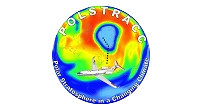Scientific objectives: Difference between revisions
From Polstracc
Content deleted Content added
No edit summary |
|||
| Line 8: | Line 8: | ||
* Monitoring of the spatial and temporal variability of trace constituents and aerosols in the Arctic UTLS region during different phases of the polar winter |
* Monitoring of the spatial and temporal variability of trace constituents and aerosols in the Arctic UTLS region during different phases of the polar winter |
||
* Improving model simulations for the evolution of the ozone layer and the knowledge on the role of the Arctic UTLS region in the climate system |
* Improving model simulations for the evolution of the ozone layer and the knowledge on the role of the Arctic UTLS region in the climate system |
||
<br/> |
|||
[[Category:One]] |
[[Category:One]] |
||
Revision as of 21:53, 8 October 2014
Key issues adressed by POLSTRACC are:
- Improving the understanding of chemical and physical processes involved in polar ozone loss
- Detailed investigation of structure and composition of the climate-sensitive UTLS region at high latitudes with focus on the LMS region, the direct interface between stratosphere and tropopause
- Investigation of the outflow of the Arctic polar vortex into the LMS region, subsequent transport to lower latitudes and mixing with extra-vortex air
- Improving the knowledge on the properties of polar stratospheric clouds (PSCs) and vertical redistribution of nitrogen-containing compounds by PSC particles into the lower stratosphere
- Investigation of the role of Arctic cirrus clouds affecting the chemical composition and radiative budget of the Arctic UTLS
- Monitoring of the spatial and temporal variability of trace constituents and aerosols in the Arctic UTLS region during different phases of the polar winter
- Improving model simulations for the evolution of the ozone layer and the knowledge on the role of the Arctic UTLS region in the climate system
